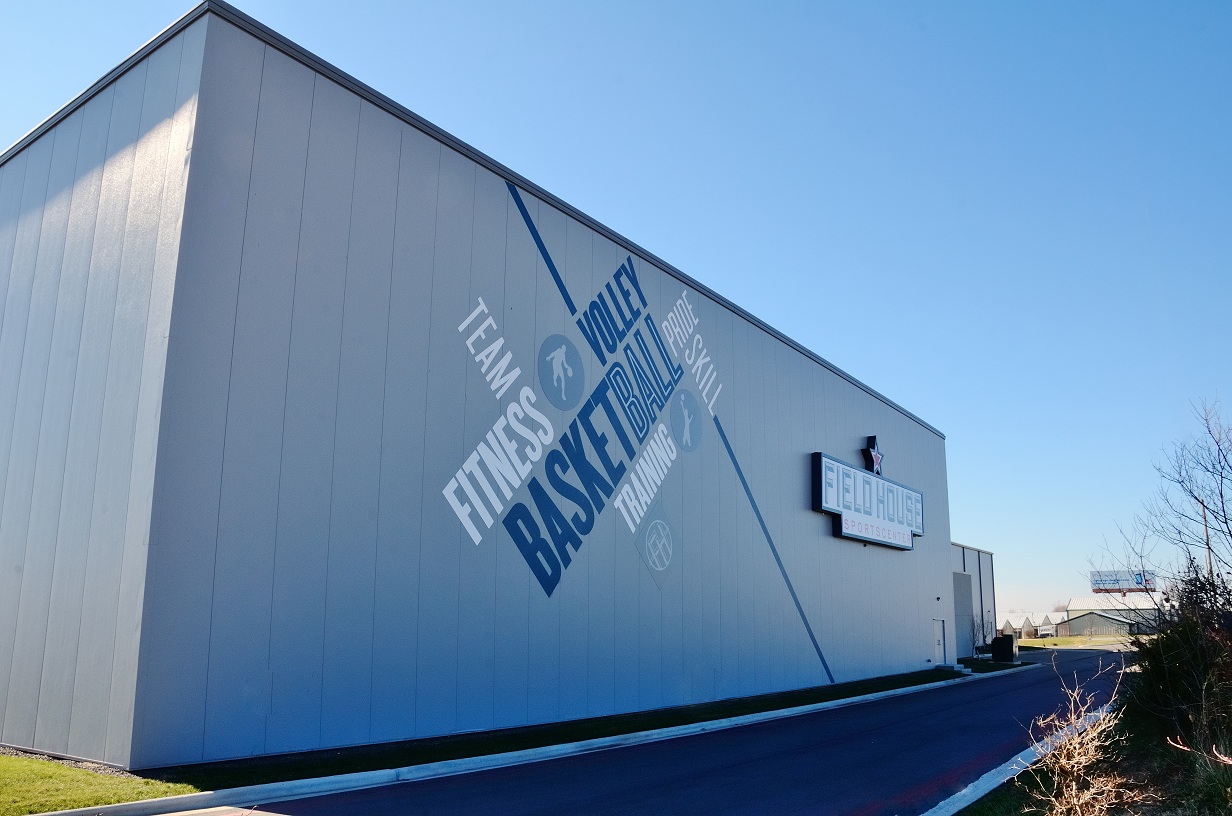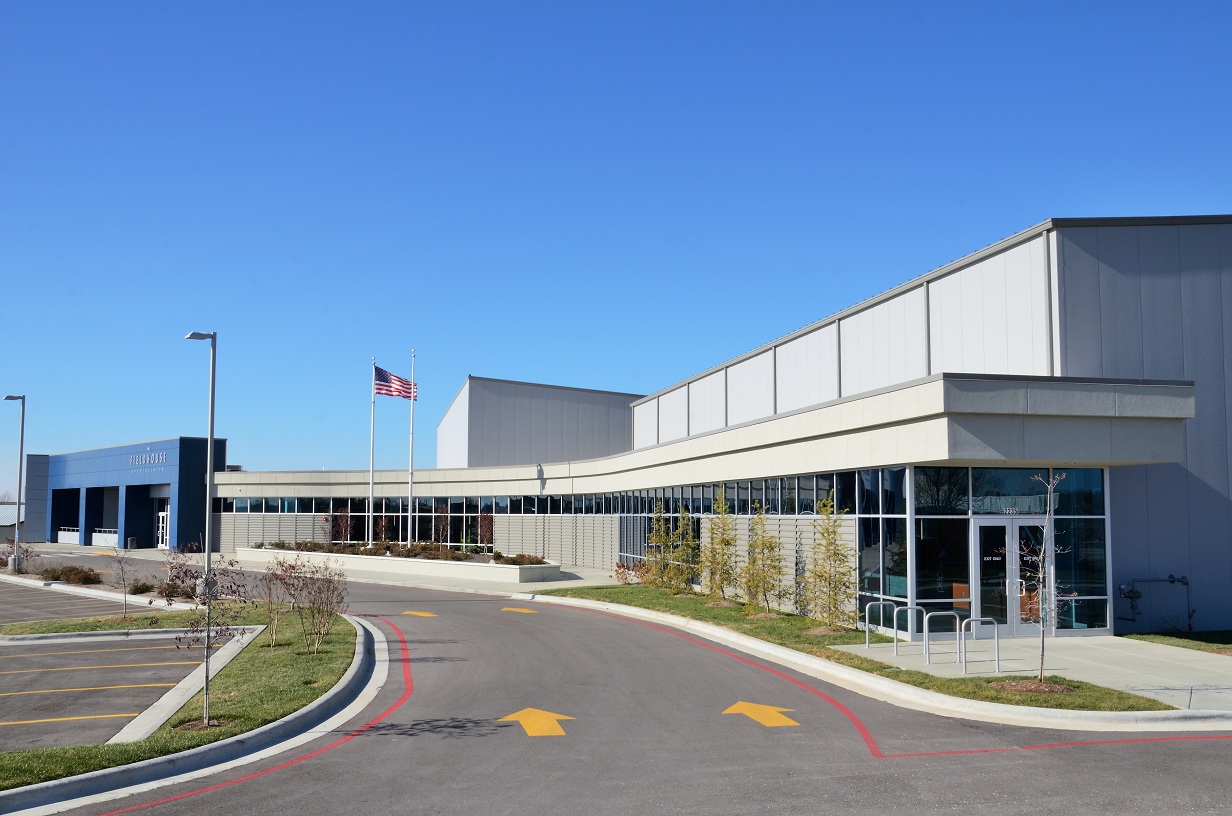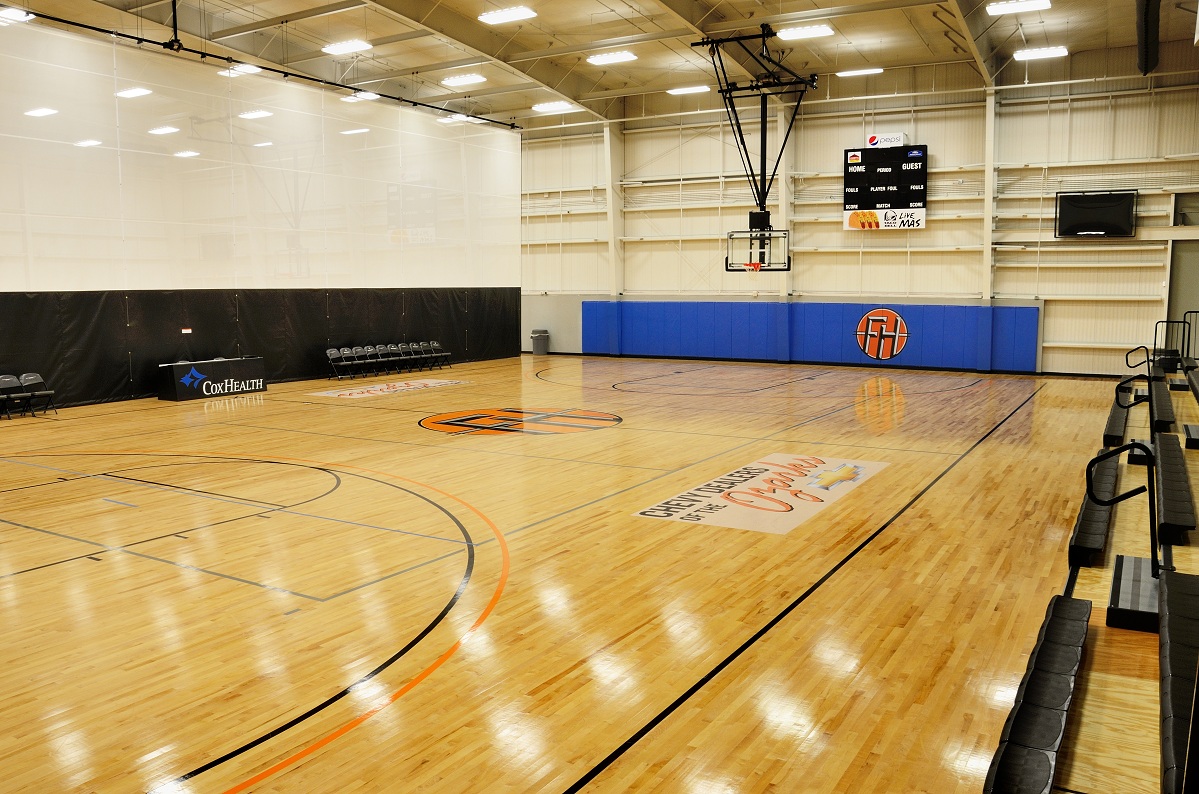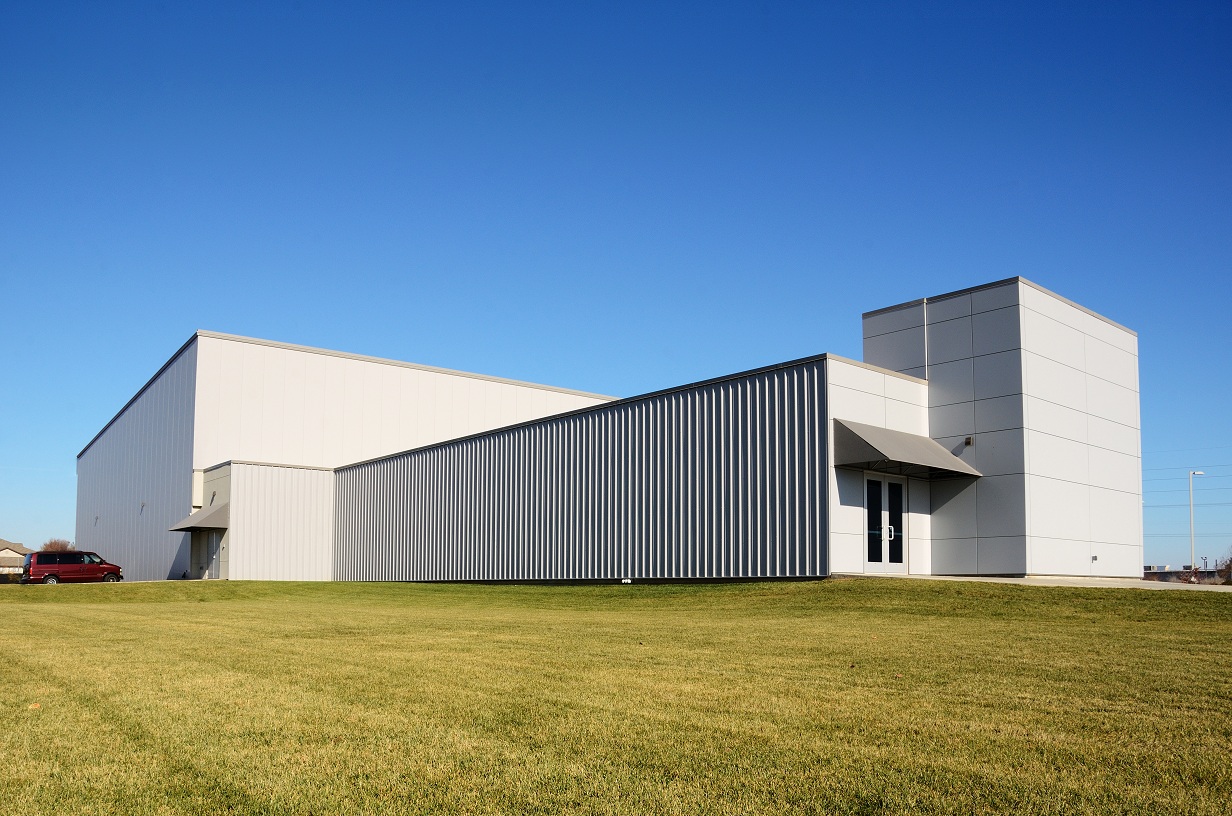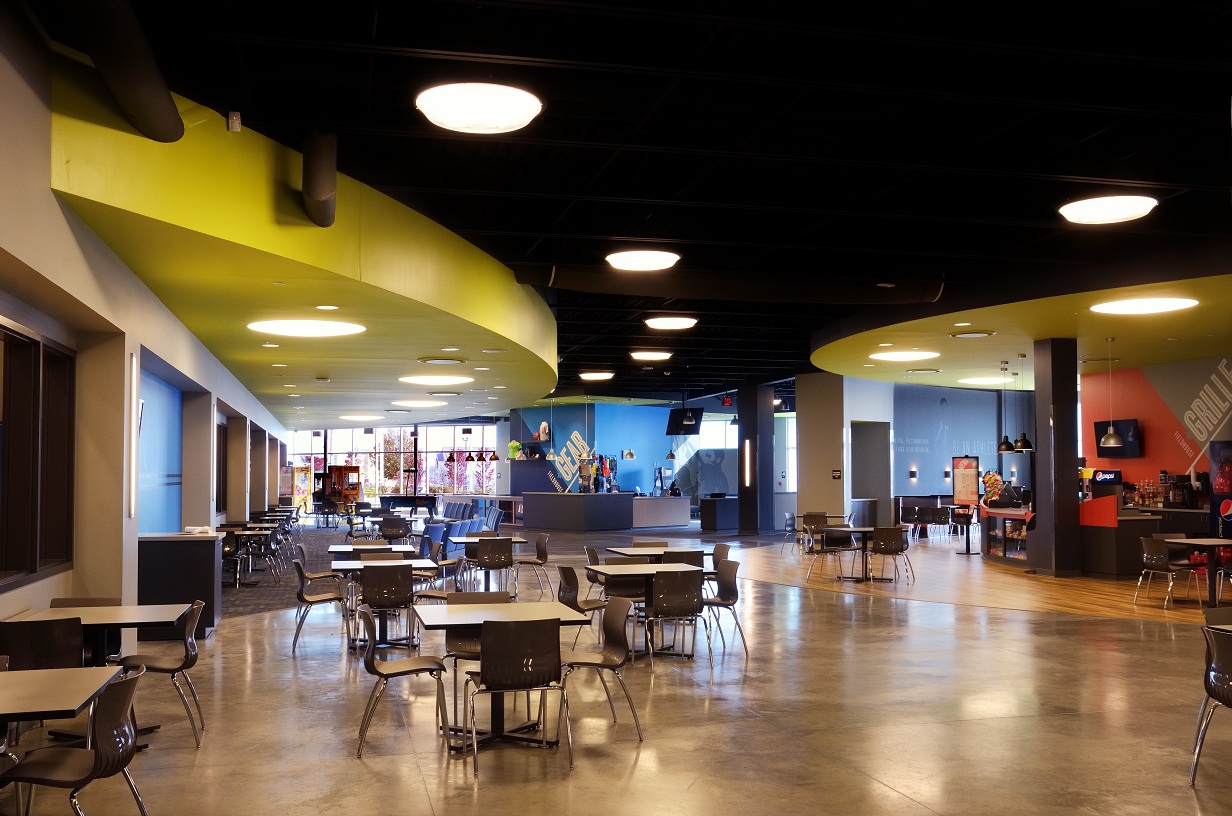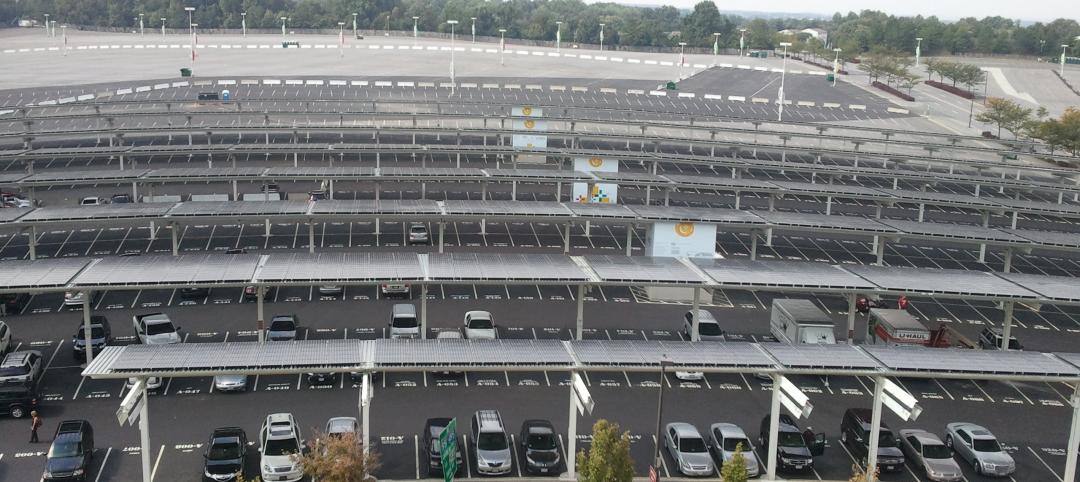Basketball and volleyball take center stage at The Fieldhouse Sportscenter, a multi-purpose sports facility in Springfield, Mo. Attracting student athletes and families from throughout the Midwest, the 46,000-square-foot complex hosts youth basketball and volleyball leagues and tournaments as well as a range of community events and gatherings.
Two separate metal gym buildings accommodate a total of four full-size basketball courts or six volleyball courts. The structures are connected by a structural steel building that provides a common gathering area that includes a restaurant with indoor and outdoor seating, a video arcade, four party/conference rooms and storage areas.
“There were a lot of different elements that had to be tied in correctly to make the three different buildings work together effectively,” says David Ross, director of operations and project manager at Morelock-Ross, the Star builder that led the construction. “One of the most unique elements of this project is the energy-efficient envelope, which includes three-inch-thick insulated metal wall panels and a Simple Saver roof liner system with additional insulation.”
Contributing to the design aesthetic, the buildings combine several different custom exterior finishes.
“The project was designed to provide a distinguished façade along the James River, emphasizing the dynamics of activity and movement,” says Todd Bolin, project architect at H Design Group. “The design intent was to simplify the form and structure of the buildings and tie in the ideals of competition, sportsmanship and camaraderie through murals, signage and apparel.”
Located on a prominent site in the growing southwest part of Springfield, The Fieldhouse adds significant capacity to the city’s youth sports venues and attracts visitors from a 10-state Midwest region.
“There is a facility on the north side of the city that was busting at the seams,” says Craig Naugle, MD, a local physician and the primary investor in the project. “We knew there was a need, and my wife and I wanted to invest in the community that way. It’s really working well as a community center.”
Operating year-round, the facility is able to host upward of 70 teams per weekend in a single venue.
“I think it’s just a great place for families to get together,” Naugle says. “We also have community rooms that people can rent for birthday parties, lunch meetings, business groups and church lock-ins.”
Naugle’s primary goal was to raise the bar for youth sports facilities by providing an authentic playing atmosphere for athletes and their families, many of which travel several hundred miles to compete.
“It provides a much better flow than other facilities I’ve seen around the country,“ he says. “Most facilities tend to be barn-like structures, with a bunch of gyms stacked on top of each other. You get a lot of whistle noise, and kids are constantly distracted. What’s amazing about our facility is that once you’re in the common area looking through the windows, you can hardly hear anything in the gyms.”
The Fieldhouse also offers courtside seating and privacy curtains to provide acoustical separation between the courts.
“When people come here from out of state, they uniformly say they’ve never played basketball in a facility this nice. I hear that time and time again when we host tournaments,” he says.
Naugle is also blown away by the energy efficiency of the facility.
“Our utility bills are at least 25 to 30 percent less than we thought they would be when we were estimating that in our business plan,” he says. “It’s pretty remarkable.”
The complex was designed to accommodate future expansion through a second construction phase that will add an additional two gyms.
Project Credits
Owner/developer: Midwest Events Center LLC
General contractor: Morelock-Ross Builders Inc.
Architect: H Design Group LLC
Civil Engineer: Anderson Engineering
Structural Engineer: Mettemeyer Engineering LLC
MEP Engineer: Colvin Jones Davis LLC
Related Stories
| Sep 30, 2011
Design your own floor program
Program allows users to choose from a variety of flooring and line accent colors to create unique floor designs to complement any athletic facility.
| Sep 16, 2011
Largest solar installation completed at Redskins' football stadium
On game days, solar power can provide up to 20% of FedExField’s power.
| Sep 12, 2011
First phase of plan to revitalize Florida's Hialeah Park announced
This is the first project of a master plan developed to revive the historic racetrack.
| May 25, 2011
Olympic site spurs green building movement in UK
London's environmentally friendly 2012 Olympic venues are fuelling a green building movement in Britain.
| Apr 11, 2011
Wind turbines to generate power for new UNT football stadium
The University of North Texas has received a $2 million grant from the State Energy Conservation Office to install three wind turbines that will feed the electrical grid and provide power to UNT’s new football stadium.
| Apr 5, 2011
U.S. sports industry leads charge in meeting environmental challenges
The U.S. sports industry generates $414 billion annually. The amount of energy being consumed is not often thought of by fans when heading to the stadium or ballpark, but these stadiums, parks, and arenas use massive quantities of energy. Now sports leagues in North America are making a play to curb the waste and score environmental gains.
| Mar 25, 2011
Qatar World Cup may feature carbon-fiber ‘clouds’
Engineers at Qatar University’s Department of Mechanical and Industrial Engineering are busy developing what they believe could act as artificial “clouds,” man-made saucer-type structures suspended over a given soccer stadium, working to shield tens of thousands of spectators from suffocating summer temperatures that regularly top 115 degrees Fahrenheit.
| Mar 11, 2011
University of Oregon scores with new $227 million basketball arena
The University of Oregon’s Matthew Knight Arena opened January 13 with a men’s basketball game against USC where the Ducks beat the Trojans, 68-62. The $227 million arena, which replaces the school’s 84-year-old McArthur Court, has a seating bowl pitched at 36 degrees to replicate the close-to-the-action feel of the smaller arena it replaced, although this new one accommodates 12,364 fans.


